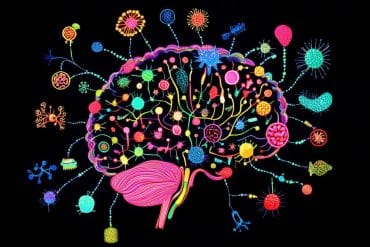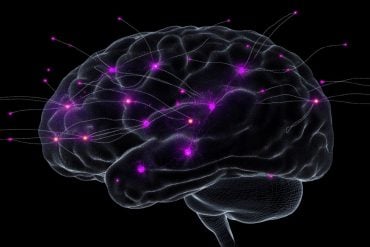Summary: Research shows that when rating food for appeal or calorie content, judgments are influenced by the food choices we’ve made just before. This effect, known as serial dependence, causes people to rate the next food similarly to the previous one, whether it’s more appealing or less.
The study suggests that our perception of food is not as independent as we might think and could impact daily decisions and behaviors. This phenomenon could inform strategies for healthier eating habits and is also relevant for food marketing and treating eating disorders.
Key Facts:
- Serial dependence affects food ratings based on prior judgments.
- A highly rated food increases the likelihood of a higher rating for the next one.
- These findings can inform marketing strategies and eating disorder therapies.
Source: University of Sydney
Research at the University of Sydney has revealed that we don’t judge food simply on its merits but are influenced by what we have seen beforehand, a cascading phenomenon known as ‘serial dependence’.
The research, published today in the high-impact journal Current Biology, was conducted by Professors David Alais and Thomas Carlson in the School of Psychology at the University of Sydney working in collaboration with Professor David Burr at the University of Florence.
Their study shows when people rate food images for appeal and calorie content, the evaluation is not made in isolation. Instead, it is subtly biased towards the judgement that preceded it.

Serial dependence arises when people make a series of sequential choices. In the context of food, if a person rates a food as very appealing, they are likely to rate the next food image more favourably, regardless of its calorie content or appeal.
It works the other way, too: a preceding unappealing food makes a current food less appealing.
The findings could assist psychologists to develop treatments for people with eating disorders to eat more or less food, and may help marketers in the presentation of food menus.
Lead author Professor Alais said: “The experimental conditions for serial dependence are not very different from our everyday experiences with food images, such as when we scan a food delivery menu or browse a menu on our phone. Serial dependence, therefore, might be affecting millions of food choices every day.”
The researchers conducted experiments with more than 600 participants who rated various food images for both calorie content and appeal. The results revealed a clear pattern of serial dependence: participants’ ratings tended to follow their previous rating.
For instance, a high rating for one food item led to a higher rating for the subsequent item, creating a chain reaction of evaluations that are interconnected rather than independent.
While the study found that men tended to rate high calorie food slightly higher than women, the overall serial dependence effect was not sex dependent and was similar for all.
“This study highlights the cognitive biases that come into play when we evaluate food,” Professor Alais said. “Our brains are wired to assimilate information from previous stimuli, just as we might be drawn to a particular dish after seeing a similar one rated highly.”
Co-author Professor Carlson said: “Our previous work has shown that the visual brain encodes the perceived caloric content of foods in just milliseconds. It will be fascinating to see the interplay between these cognitive biases and visual processing in future work.”
Beyond the immediate interest to visual neuroscientists exploring how our brain processes images, this research has potential useful applications.
For food marketers and restaurateurs, understanding serial dependence could inform strategies to enhance the appeal of their menu offerings. By placing high-appeal items or calorie-rich foods in a sequence, they could influence consumer perceptions and potentially drive sales.
This research also has potential to play a role in clinical settings, particularly in addressing obesity, compulsive eating, bulimia and related eating disorders.
By recognising how previous food ratings can affect subsequent choices, cognitive behavioural therapies could be tailored to leverage these findings, helping people reshape their perceptions and decision-making processes around food.
This approach could promote healthier eating habits and support effective interventions for those struggling with eating disorders.
Professor Alais and his team have previously found similar visual trends for people perusing dating apps, or assessing the beauty of art work.
About this psychology research news
Author: Katie Spenceley
Source: University of Sydney
Contact: Katie Spenceley – University of Sydney
Image: The image is credited to Neuroscience News
Original Research: Open access.
“Positive serial dependence in ratings of food images for appeal and calories” by David Alais et al. Current Biology
Abstract
Positive serial dependence in ratings of food images for appeal and calories
Food is fundamental to survival, and our brains are highly attuned to rapidly process food stimuli. Neural signals show that foods can be discriminated as edible or inedible as early as 85 ms after stimulus onset, distinguished as processed or unprocessed beginning at 130 ms, and as high or low density from 165 ms.
Recent evidence revealed specialized processing of food stimuli in the ventral visual pathway, an area that underlies perception of faces and other important objects. For many visual objects, perception can be biased toward recent perceptual history (known as serial dependence).
We examined serial dependence for food in two large samples (n > 300) who rated sequences of food images for either “appeal” or “calories.” Ratings for calories were highly correlated between participants and were similar for males and females.
Appeal ratings varied considerably between participants, consistent with the idiosyncratic nature of food preferences, and tended to be higher for males than females. High-calorie ratings were associated with high appeal, especially in males.
Importantly, response biases showed clear positive serial dependences: higher stimulus values in the previous trials led to positive biases, and vice versa. The effects were similar for males and females and for calories and appeal ratings and were remarkably consistent across participants.
These findings square with recently found food selectively in the visual temporal cortex, reveal a new mechanism influencing food decision-making, and suggest a new sensory-level component that could complement cognitive strategies in diet intervention.






